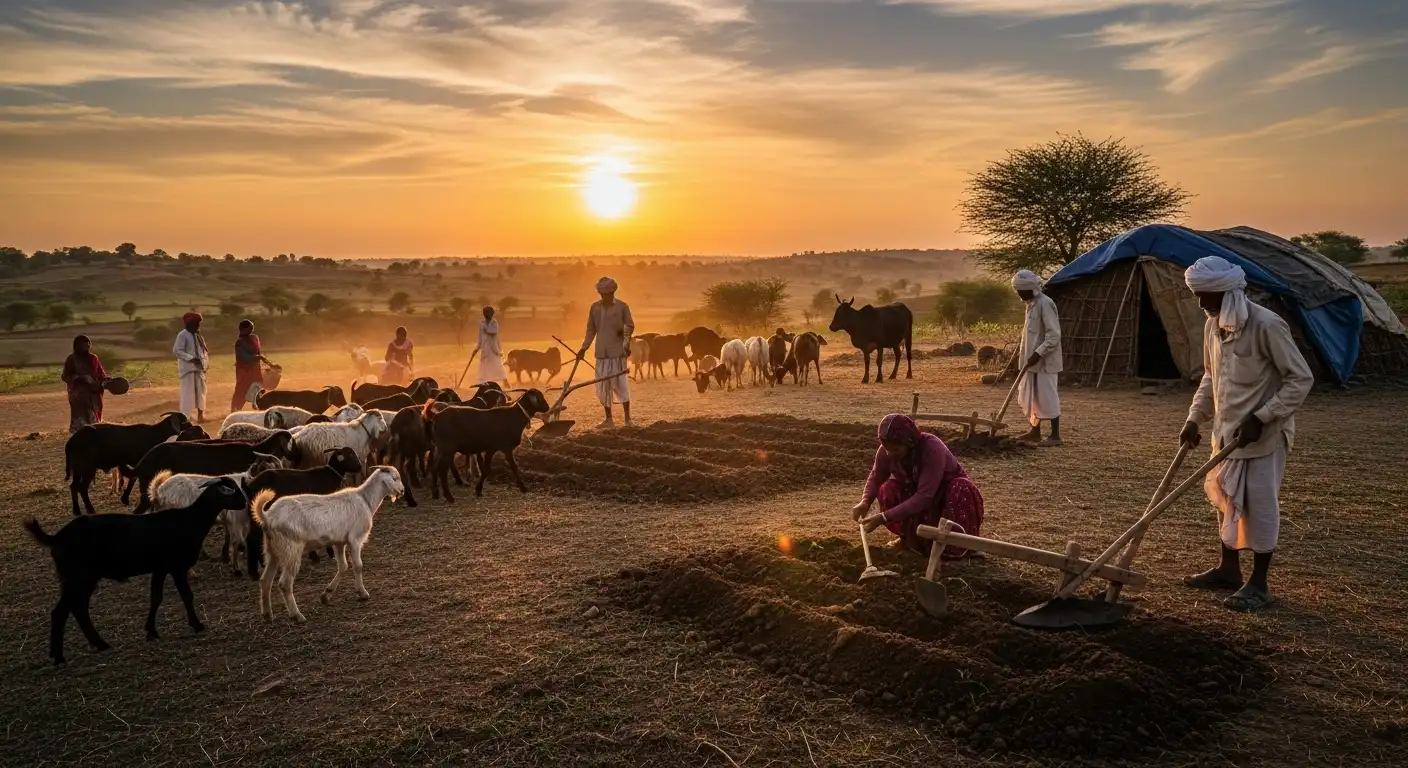Nomadic Farming Meaning
Since the beginning of time, nomadic culture has been one of the ancient practices that have remained to this day, even with the ever-changing modern times. When we talk about nomads, we need to understand the importance of their culture and the true reason behind this concept.
Let’s discuss who nomads are first- those who explore the world, travel from one place to another and never settle down, mostly in search of food, water or for grazing their livestock are called nomads. Their living standards are temporary, like living in tents or shelters, and their major dependency is on natural resources. The transitional shift happens mainly during seasonal changes or uncertain issues that arise.
Nomadic communities or individuals travel on a regular basis instead of permanently settling and are divided into three categories-
- Pastoral Nomads– Farmers who travel with their herd like (cattle, goat, camels etc.) to find food and water for their herd to sustain a livelihood.
- Hunter Gather Nomads– Nomads who travel in search of wild animals and seasonal plants for hunting purposes.
- Peripatetic Nomads– Traders and servicemen who travel across the world as craftsmen or entertainers in exchange of a stable livelihood.
What is Pastoral/Nomadic farming?
A type of agricultural practice focused on raising livestock rather than growing crops, it is practiced mainly in regions where the land or climate is not suitable for cultivation. Animals like cows, sheep, goats, etc., are raised for raw materials like milk, leather, wool, etc. The traveling is mostly done for grazing purposes.
There are 2 types of pastoral farming-
- Nomadic – Farmers move from place to place in search of grazing land and water.
Example – the Maasai in Kenya and Tanzania. - Sedentary – Farmers stay in one place and maintain permanent pastures or ranches.
Example – Common in developed areas like Australia and New Zealand.
Benefits of Nomadic Farming

- Efficient use of natural resources– Due to seasonal changes, there are unused natural sources that can be wasted but are utilized to their full extent.
- Prevents overgrazing in one area– Since herders move continuously, it gives the land time to recover, regrow and retain the soil fertility.
- Adaptations to harsh environments– Since nomadic farming takes place in non cultivable areas, it helps farmers to survive in harsh climatic changes in areas like deserts or snowy mountains.
- Source to livelihood– Cattle farming helps with resources like milk, wool, leather and other products that can be used for trading and sustaining.
Challenges of Nomadic Farming

- Uncertain food and supply– Unexpected weather conditions like drought or flood can lead to shortages of food and water supply and can impact the dependency of natural resources for both animals and farmers. Such environmental changes can also cause soil erosions, deforestation or loss of biodiversity.
- Low productivity– Since the main goal is survival rather than high output, it isn’t a surety that animals would often produce milk, wool etc.
- Land Conflicts– As lands and farms have become privatized; it has become difficult for grazers to look for a land without restrictions and boundations, therefore often leading to conflicts between settled farmers or government.
- Market Impacts– Constant transitions makes it difficult to access schools, healthcare and selling products in markets
Nomadic Farming in India

There are different regions that practice this kind of farming in India till today-
- Rajasthan: The Raikas or Rabaris move with camels, sheep, and goats across the Thar Desert.
- Jammu & Kashmir / Himachal Pradesh: The Gaddis and Bakarwals herd sheep and goats in the Himalayan pastures.
- Gujarat: Maldharis raise cattle and buffaloes in the semi-arid Kutch region.
- Ladakh: The Changpas herd yaks, goats, and sheep in cold desert conditions.
Nomadic farming therefore helps sustain centuries old customs, community ties and ecological wisdom about animal care and land use.

